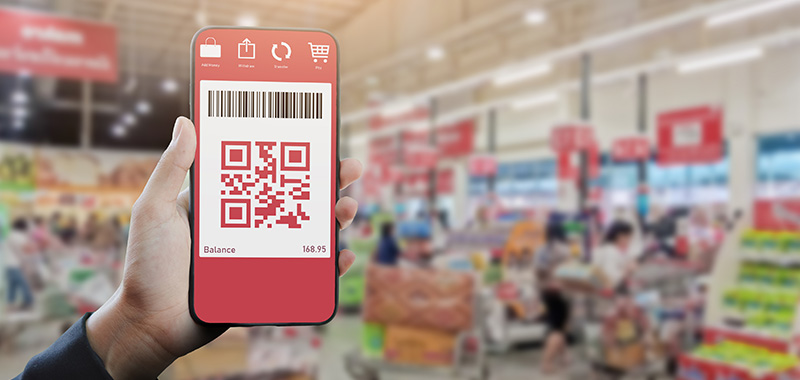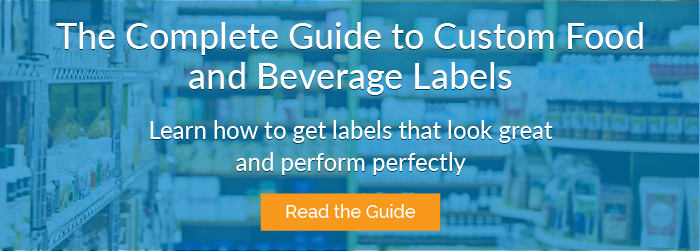
The way we eat is changing, and with it, the information we look for on product labels. Many Americans are no longer content to remain in the dark about the ingredients in their food, the source of the ingredients, and how they’re processed.
The growing consumer desire to know about their food products presents challenges and opportunities for food makers – prompting some innovative brands to take this information beyond the standard food label into something much more.
Consider these statistics from Label Insight’s 2017 Shopper Trends Survey:
- Nearly half (49%) of consumers follow diets or health programs that impact how they shop for food. Popular diets include heart-healthy, gluten-free, vegetarian/vegan, and paleo.
- Three-quarters of consumers avoid specific ingredients when shopping for food.
- Forty-eight percent of consumers say they feel “not informed at all” after reading product labels. Consumers cite “not knowing where to find the needed product information” as their number-one frustration when it comes to shopping within their nutritional wants and needs.
The most obvious difficulty is how to squeeze all that information on a product label. A label offers only so much real estate, and fonts can only get so small before they become illegible.
It’s partially a design challenge. The text-heavy look is a valid (and trendy) choice. But one of the primary roles of labels is to appeal to consumers who are making split-second buying decisions based on visual cues. Huge blocks of tiny print can be off-putting and can present real issues for people with any level of visual impairment. This can present a real danger considering many of the serious food allergies and intolerances out there.
If there isn’t room on your label to tell the whole story, new smart label technology may be the solution.
Driven by our increasingly connected society and enabled by the powerful mobile devices nearly everyone carries, smart labels are helping food brands serve their customers by satisfying their need for information. Here are some of our favorite ways food and beverage brands are transforming the shopping experience with smart label technology:
Consumers Track Tuna on a Blockchain
Consumers are becoming more conscious of the devastation overfishing can wreak on ocean populations. Tuna brand Bumble Bee announced that its customers will now be able to trace their seafood back to its origin and verify it has been sustainably caught, simply by scanning a QR code on the product package. Among other things, consumers can learn about the size of the catch, the point of capture, and the fishing community that caught it.
Bumble Bee’s traceability initiative, which will begin with its Natural Blue by Anova yellowfin tuna, is powered by blockchain technology in partnership with SAP. Blockchain, as Bumble Bee describes, provides a “tamper-proof supply chain history” that ensures both traceability and transparency.
Other brands, such as Walmart, are also using blockchain to trace agricultural products.
Brands Jump on the SmartLabel Bandwagon
In late 2015, the Grocery Manufacturers Association introduced the SmartLabel program. The program is a voluntary initiative that allows brands to share information about sustainability and sourcing, ingredients, allergens, and more, via product labels. Anywhere consumers see the SmartLabel logo, they can access more information by scanning a QR code with the SmartLabel app. (They can also call a 1-800 number.)
The Grocery Manufacturers Association says over 40 major companies have committed to using SmartLabel and more than 40,000 individual products use the SmartLabel format. You can add your product to the list by contacting brands@smartlabel.org.
Researchers Designing Sensors to Detect Spoilage
“Sell by” dates are notoriously inaccurate indicators of food freshness. Millions of pounds of perfectly good food are discarded every year because of uncertainty about spoilage.
Researchers at Clemson University think smart labels can save all this edible food from going to waste. They’re working on “intelligent packaging” that can detect the biological indicators of food gone bad. The technology still has a way to go, but if it comes to fruition, it will save consumers money, reduce food waste, and prevent needless trips to the grocery store.
Whiskey Bottles Join the Internet of Things
Most smart labels rely on QR codes, two-dimensional barcodes readable with a smartphone app. But barcodes aren’t the only way to allow consumers to interact digitally with product labels.
At the Mobile World Congress in 2015, Scotch whiskey maker Johnnie Walker introduced a smart label powered by near-field communication (NFC). Most smartphones these days are NFC-enabled, meaning they can share data wirelessly, via radio waves, with NFC transmitters over very short distances. (The technology is a step in the evolution of radio-frequency identification, or RFID.)
Johnnie Walker’s idea was to print thin NFC-enabled sensors that can detect and tell consumers whether a bottle has been opened or not. The information helps consumers determine whether their expensive Scotch has been tampered with. The NFC labels can transmit other information, as well, such as cocktail recipes.
Barcodes and embedded microchips can also help brands track their products through the supply chain, which, in turn, can reduce counterfeiting and gray market sales.
Get Smart Help with Your Next Custom Label
Food product labels offer so many more possibilities for design, texture, and digital connectivity than even just a few years ago. It’s always helpful to have an expert on your side, helping you sort through your options and choosing an approach that represents your brand and appeals to your customers. Get in touch with the Label Printers today to discuss opportunities for your next food product label.

